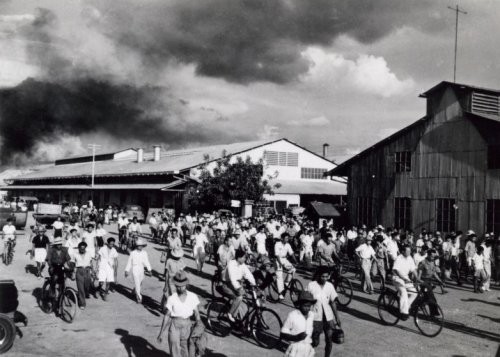
Since the invention of the steamship and telegraph, as well as the opening of the Suez Canal in the 19th century, European companies have flocked to invest in the Dutch East Indies. Of course, the majority of incoming investments were in extractive sectors such as plantations and mining.
Coffee, tea, tobacco and oil palm plantations were growing rapidly, as were oil wells and refineries. The Plaju oil refinery was founded by Bataafsche Petroleum Maatschappij (BPM) and started operations in 1904. Plaju refinery processes crude oil from various wells around Palembang.
When the Second World War broke out, one of the first places that Japan military seized was the Plaju oil refinery which was the largest oil refinery in Southeast Asia at that time. Oil was very important for Japan to make sure their factories and war machines kept working. The Japanese sent paratroopers over Palembang and quickly captured the city along with the Plaju oil refinery and oil wells around the city.
During the Indonesian war of independence, the Plaju oil refinery was also a bone of contention between the Dutch and Indonesian military. The photo above shows activity in the afternoon at the Plaju oil refinery as workers return home, 1948.
Until now, the Plaju oil refinery is still operating under the control of Pertamina, an Indonesian state-owned oil company.
Comments